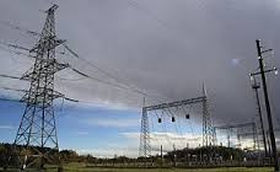Energy, Energy Market, Estonia, EU – Baltic States
International Internet Magazine. Baltic States news & analytics
Wednesday, 17.04.2024, 01:23
Unsupported electricity market should be operating in Estonia in 2030
 Print version
Print version |
|---|
The minister highlighted that an important part of the energy market is the gas market. She said that the prerequisite for using gas is reducing its supply risks. "By 2030 we are seeking that the share of the biggest supply source on the Estonian gas market does not exceed 70% and the share of the biggest gas seller on the Estonian gas market does not exceed 32%. The state is helping to achieve these margins by developing a gas infrastructure, the most important upcoming projects of which in the next few years include building gas connections between Estonia and Finland as well as and Lithuania and Poland," Simson said.
"The development plan of the energy sector deems it necessary to maintain district heating systems in regions where they are sustainable and able to provide consumers with inexpensive energy solutions that take into account environmental requirements," Simson said.
"The state's most important task in energetics is to ensure consumers' energy supply and energy security," the minister said. Simson noted that the plan includes the biggest changes in the electricity supply industry. "The generating installations and power plants based in Estonia must be able to provide the operation of all vital services at all times. The state's main goal in ensuring energy security is to synchronize the energy systems of Estonia and the Baltic countries with the leading frequency range in the European Union," Simson said.
"With the development plan we wish that in the future an average Estonian resident would have to deal with interruptions in the distribution network two to three times less than now. For this we need to achieve a 75-80% share of weatherproof network as opposed to the current share of around 37% in the distribution network," Simson said.
Simson said that the development plan stipulates concrete targets in sustainable energetics. "With the development plan we have set a goal that by 2030 electricity production from renewable energy sources will constitute 50% of the domestic final consumption of electricity," Simson said. "Without considerable distortion on the electricity market it is possible that building new renewable electricity generating installations in 2030 under the conditions of an open electricity market will occur without additional internal support. Using local fuels and first and foremost local renewable energy sources can be expanded also to heat generation," Simson said. "With the development plan, our aim is that by 2030 a total of 80% of heat generated in Estonia will be produced from renewable energy sources," Simson said.
"In energy saving we are focusing on two segments of the final consumption of energy: energy saving in buildings and transport," Simson said. She added that opportunities must be found to continue supporting dwelling reconstruction to preserve the housing fund and decrease energy consumption. The minister noted that with the help of the means considered during the drawing up of the development plan, it is possible to avoid an increase in the energy consumption in transport.








 «The Baltic Course» Is Sold and Stays in Business!
«The Baltic Course» Is Sold and Stays in Business!

